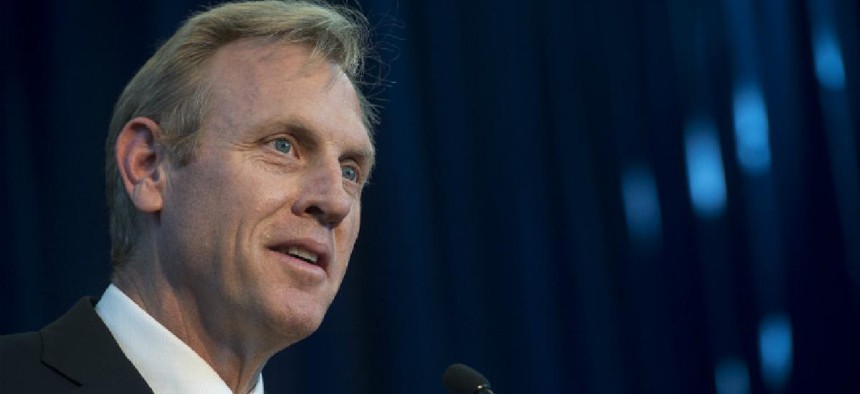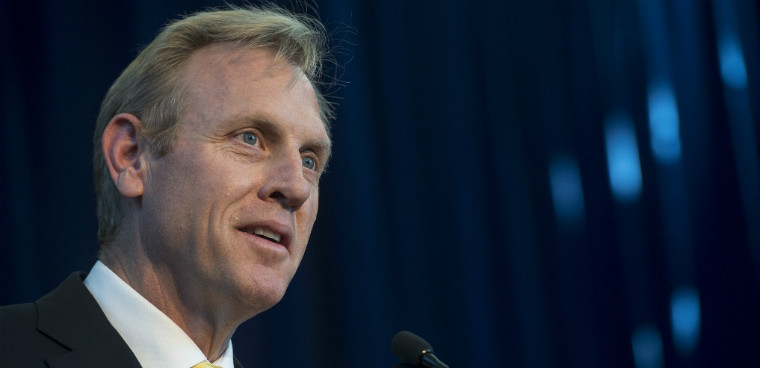DOD DepSec weighs in on Space Force

No. 2 Pentagon official Patrick Shanahan tries to allay Air Force worries that a Space Force would uproot its Space and Missile Command.

Deputy Secretary of Defense Pat Shanahan speaks during the Defense Intelligence Agency change of directorship ceremony at Joint Base Anacostia-Bolling in Washington. D.C., Oct. 3, 2017 (DOD photo by Air Force Tech. Sgt. Brigitte N. Brantley)
Deputy Defense Secretary Patrick Shanahan addressed Air Force worries that a Space Force would uproot its Space and Missile Command.
"How does the Space and Missile Command fundamentally change? It doesn't to me," Shanahan said at the Air Force Association Air, Space, Cyber conference.
The deputy defense secretary said that developing a plan for a legislative proposal due in early 2019 was a "complicated process" and that there was no "groupthink in the Pentagon."
Shanahan's comments came just days after Air Force Secretary Heather Wilson outlined a proposal that estimated standing up a Space Force would cost upwards of $13 billion and suggested the idea of a new Space Development Agency under the Air Force's Space Rapid Capabilities Office.
"We're really wrestling with the how," Shanahan said, adding that it was hard to narrow down all DOD wants to accomplish with the Space Force. "To do a Venn diagram on what it is we want to accomplish -- everything lays on top of one another."
Shanahan briefly touched on DOD's IT, cybersecurity and acquisition challenges, decrying the use of custom-built, federated IT solutions.
"A custom federated approach is a trap. Our teammates deserve a modern environment. The department deserves standardization. And the taxpayers deserve the corresponding dividend," he said, echoing the Defense Department's new call for more off-the-shelf technology in the new cyber strategy released Sept. 18.
"Cybersecurity is probably what we call the fourth critical measurement," he said. "It's one of those measures that we need to hold people accountable for," and top-tier leaders have a responsibility to the supply chain.
Additionally, Shanahan said DOD is identifying risks to its information network (DODIN) and plans to brief industry in the coming weeks on how it will address vulnerabilities it found.
But he warned industry that boosting security shouldn't yield a premium. "You want to pay extra for quality. We shouldn't pay extra for security."
Cutting down on the slog
The Defense Department has a history of paying for things with time, especially in acquisition. Shanahan said that getting more industry members into DOD would help cut down on the requirements slog.
"We spend an inordinate amount of time talking about what process to use or the acquisition strategy will be. We've been in the acquisition mode for the last 17 years in a very consistent environment. And now we're making a big shift to doing a whole new level of modernization," Shanahan said.
"We need a few more folks from industry so that we don't get caught up in the processes," he said. "I haven't found significant limitations in the acquisition process; I've found limitation in how we use it and having people with the skill to deploy it."
Ultimately, Shanahan said it will come down to performance, especially in terms of the budget. "Our ability to perform will convince Congress it's worth the tradeoff to give us what we need."
NEXT STORY: Air Force rolls out PEO Digital



